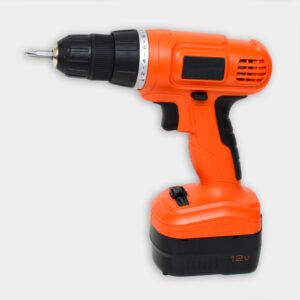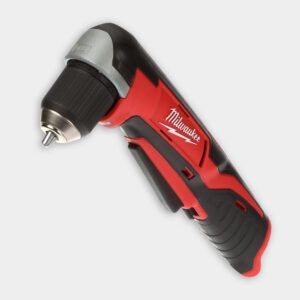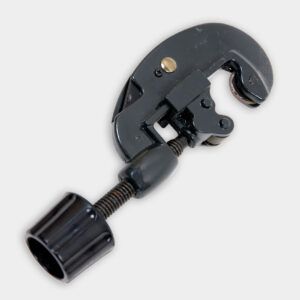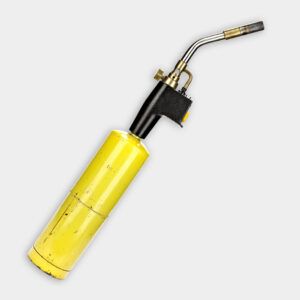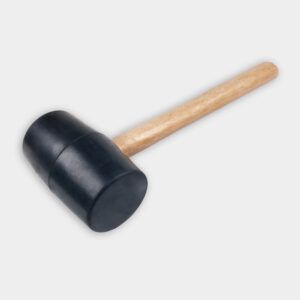We may be compensated if you purchase through links on our website. Our team is committed to delivering honest, objective, and independent reviews on home products and services.
Project details
Skill
Cost
Estimated Time
Radiant heat offers a luxurious and efficient way to warm your home, particularly in bathrooms and other tiled areas. This innovative heating method provides consistent, comfortable warmth from the floor up, eliminating cold spots and drafts. This Old House plumbing and heating expert Richard Trethewey explains the process of retrofitting an old home with under-floor radiant heating in the above video.
Understanding Radiant Heat Systems
Radiant heat systems come in two primary types: hydronic and electric. Each has its own advantages and applications, so choose the right system for your specific needs.
Hydronic Radiant Heat
Hydronic radiant heat systems utilize warm water circulated through tubes beneath the floor to provide heat. This type of system is particularly effective for whole-house heating in colder climates. Benefits of hydronic radiant heat systems include:
- Consistent, even heat: Provide uniform warmth throughout the space.
- Efficient for large areas: Hydronic systems perform well in large spaces.
- Ideal for new construction or major renovations: Best suited for projects that allow for easy access to flooring.
- Versatile heat sources: Boilers, heat pumps, and other heat sources can connect to hydronic systems.
Electric Radiant Heat
Electric radiant heat systems use electrical cables or mats installed beneath the flooring to generate warmth. You’ll see these systems used for smaller areas or as supplemental heating.
Electric radiant heat systems are:
- Easy to install: Great for existing homes without significant modifications.
- Perfect for single rooms: Ideal for bathrooms and other small spaces.
- Quick to warm: Heat up specific areas rapidly.
- Suitable for tile, stone, or ceramic flooring: Works well with various hard surface materials.
Installing Hydronic Radiant Heat
Installing a hydronic radiant heat system involves several steps and requires careful planning and execution. This complex process is best left to professionals due to the need for specialized tools and knowledge.
Tools and Materials
Gather the following tools for the project:
Preparation
Before installation begins, thorough preparation of the area helps make the process more smooth:
- Clear any existing insulation between floor joists in the heating area.
- Use end nippers to remove protruding nails from the subfloor within the joist bays.
- Make sure the subfloor is clean and free of debris.
Installing Transfer Plates
Transfer plates create even heat distribution. Follow these steps to install them:
- Use 3/4-inch self-tapping screws to fasten aluminum transfer plates to the underside of the subfloor.
- Install two plates per joist bay for best results.
- Check that plates are properly aligned and securely attached.
Running Tubing
The tubing conducts the heated water through the system. Here’s how to run the tubing:
- Use a right angle drill to create two 7/8-inch-diameter holes through the floor joists, spaced 3 inches apart.
- Extend the radiant-heat tubing from the mixing station to each transfer plate.
- Gently tap the tubing into the grooves of the transfer plates with a rubber mallet.
Connecting to the Boiler
Proper connection to the home’s heating system is vital:
- Connect a T-fitting and copper pipe to supply hot water to the radiant system.
- Set up a return pipe from the radiant system back to the boiler.
- Connect new supply and return pipes to a mixing station, which includes a circulator pump, mixing valve, and relay switch.
Finishing Up
Follow this process to complete the installation:
- Attach the supply and return ends of the tubing to the mixing station.
- Cover the transfer plates and tubing with fiberglass batt insulation for better efficiency.
- Fill the system with water and remove any trapped air.
- Have a licensed electrician connect a new thermostat to the relay switch at the mixing station.
Installing Electric Radiant Heat
Electric radiant heat systems are easier to install in existing homes, especially in smaller areas like bathrooms.
Choosing the Right System
When selecting an electric radiant heat system:
- Measure the size of the area to be heated.
- Choose a system designed for use under your specific flooring type.
- Check that the system’s wattage meets your requirements and electrical capacity.
Preparation and Layout
First, clean and level the subfloor. To plan the layout, arrange the heating mats or cables, accounting for permanent fixtures. Test heating elements before installation to check for functionality.
Installation Process
The steps for installing electric radiant heat generally include to:
- Spread a layer of thinset mortar on the subfloor.
- Follow your plan to arrange heating mats or cables.
- Use a roller to press mats or cables into the thinset.
- Apply another layer of thinset over the heating elements.
- Place your chosen flooring material over the thinset.
Electrical Connections
Proper electrical connections are vital for safety and functionality. We recommend installing a ground fault circuit interrupter (GFCI) for safety and hiring a licensed electrician to make all electrical connections.
Additional Considerations When Installing Radiant Heat
Weigh considerations such as project scope, flooring compatibility, maintenance requirements, and safety features to help decide which system is right for you.
Project Scope and Flooring Compatibility
Hydronic systems are suitable for large-scale projects like whole-house heating or major renovations. They work with various flooring types but require careful planning during construction.
Electric radiant heat is simpler to install and can be retrofitted without significant changes. These systems perform best under tile, stone, or ceramic flooring due to their rapid heating and natural heat retention.
Maintenance and Safety
Maintenance differs between hydronic and electric systems. Hydronic systems may demand periodic checks of water pressure, boilers, and pumps. Electric systems require inspections for electrical integrity. Both must have emergency shut-off features and follow local regulations.
Performance and Cost Efficiency
Hydronic systems, known for even heating, are great for large areas but involve higher installation costs. They’re efficient long-term, especially with gas-powered boilers. Electric systems offer simplicity and mild upfront costs, making them economical for targeted heating. Energy usage and utility costs vary with system size and usage patterns.
Optimizing Usage and Sustainability
Optimizing radiant heat systems relies on usage and sustainable practices. Programmable thermostats allow precise heating schedules, reducing waste. Environmental consciousness drives eco-friendly heat source choices like solar thermal energy. Combining radiant systems with insulation upgrades maximizes efficiency and reduces energy consumption.
Cost and Energy Considerations of Radiant Heat Systems
While radiant heat systems provide superior comfort, think through installation and operation costs.
Installation Costs
Installation costs vary depending on the system type, area size, and if it’s a new installation or retrofit. The average cost for a radiant floor heating system is around $15.25–$60 per square foot.* Hydronic systems generally have higher upfront costs but are more economical in the long run for large areas.
Operating Costs
Operating costs depend on factors like heated area size, local energy prices, system efficiency, and usage. Using programmable thermostats and limiting operation to peak times can significantly reduce costs.
*Cost figures based on 2024 reports from Angi.

